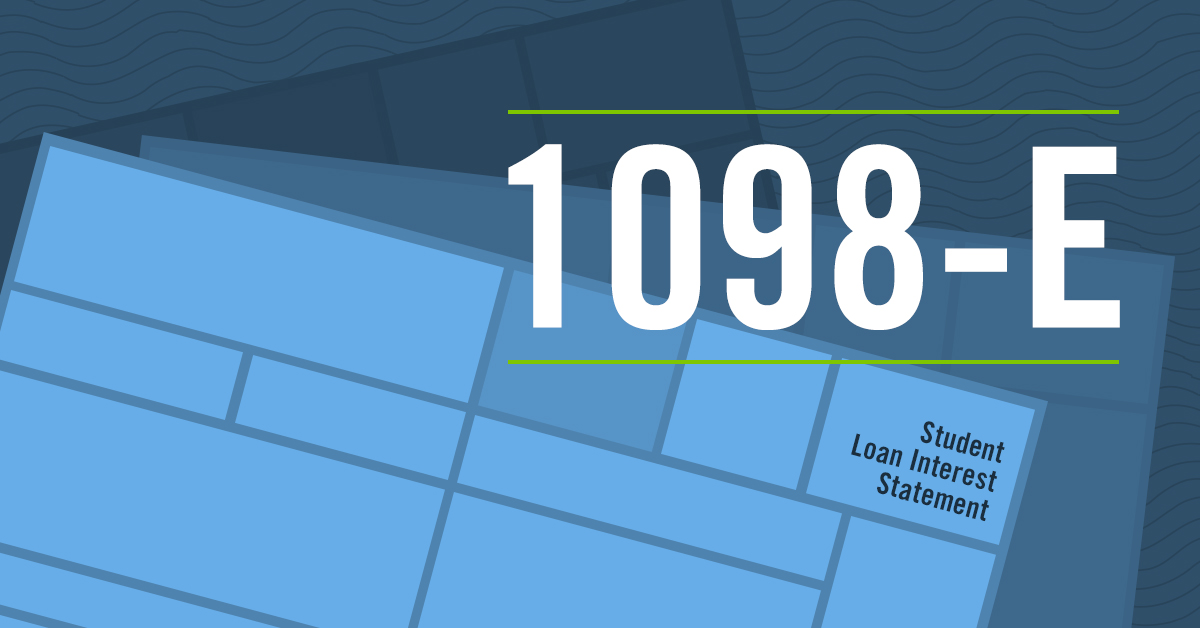HOW TO DEDUCT STUDENT LOAN INTEREST ON YOUR TAXES (1098-E)

Student loans, interest payments, and taxes: three things that have scared many people for years now. Read on to learn how these things can benefit you.
If you made federal student loan payments in 2018, you may be eligible to deduct a portion of the interest paid on your 2018 federal tax return. This is known as a student loan interest deduction. Don’t miss out on this opportunity to make the money you’ve paid work for you! Below are some questions and answers to help you learn more about reporting student loan interest payments from IRS Form 1098-E on your 2018 taxes and potentially get this deduction.
What is IRS Form 1098-E?
IRS Form 1098-E is the Student Loan Interest Statement that your federal loan servicer will use to report student loan interest payments to both the Internal Revenue Service (IRS) and to you.
Will I receive a 1098-E?
If you paid $600 or more in interest to a federal loan servicer during the tax year, you will receive at least one 1098-E.
The IRS only requires federal loan servicers to report payments on IRS Form 1098-E if the interest received from the borrower in the tax year was $600 or more, although some federal loan servicers still send 1098-E’s to borrowers who paid less than that.
If you paid less than $600 in interest to a federal loan servicer during the tax year and do not receive a 1098-E, you may contact your servicer for the exact amount of interest you paid during the year so you can then report that amount on your taxes.
How many 2018 1098-E’s should I expect to receive?
That depends on how much you paid in interest, how many federal loan servicers you had, and some other factors. Read through the scenarios below to find where you fit and learn how many 2018 1098-E’s you should expect.
- Your current servicer was your only servicer in 2018:
In this case, your current federal loan servicer will provide you with a copy of your 1098-E if you paid interest of $600 or more in 2018. Your servicer may send your 1098-E to you electronically or via U.S. mail. - You had multiple servicers in 2018:
In this case, each of your federal loan servicers will provide you with a copy of your 1098-E if you paid interest of $600 or more to that individual servicer in 2018. Your servicer may send your 1098-E to you electronically or via U.S. mail.
If you paid less than $600 in interest to any of your federal loan servicers, you can contact each servicer as necessary to find out the exact amount of interest you paid during the year.
How will reporting my student loan interest payments on my 2018 taxes benefit me?
Reporting the amount of student loan interest you paid in 2018 on your federal tax return may count as a deduction. A deduction reduces the amount of your income that is subject to tax, which may benefit you by reducing the amount of tax you may have to pay.
For more information about student loan interest deduction, visit the IRS’s Tax Benefits for Education: Information Center.
Now that you know student loans, interest rates, and taxes aren’t as scary as you may have originally thought, you are ready to report your student loan interest rates on your 2018 federal tax return!
What if I still need help or have more questions?
While we are not tax advisors and cannot advise you on your federal tax return questions, your federal loan servicer is available to assist you with any questions about your student loans, including questions about IRS Form 1098-E and reporting the student loan interest you’ve paid on your 2018 taxes. If you’re not sure who your loan servicer is, visit My Federal Student Aid to find contact information for the loan servicer or lender for your loans. To see a list of our federal loan servicers, go to the Loan Servicers page on StudentAid.gov.